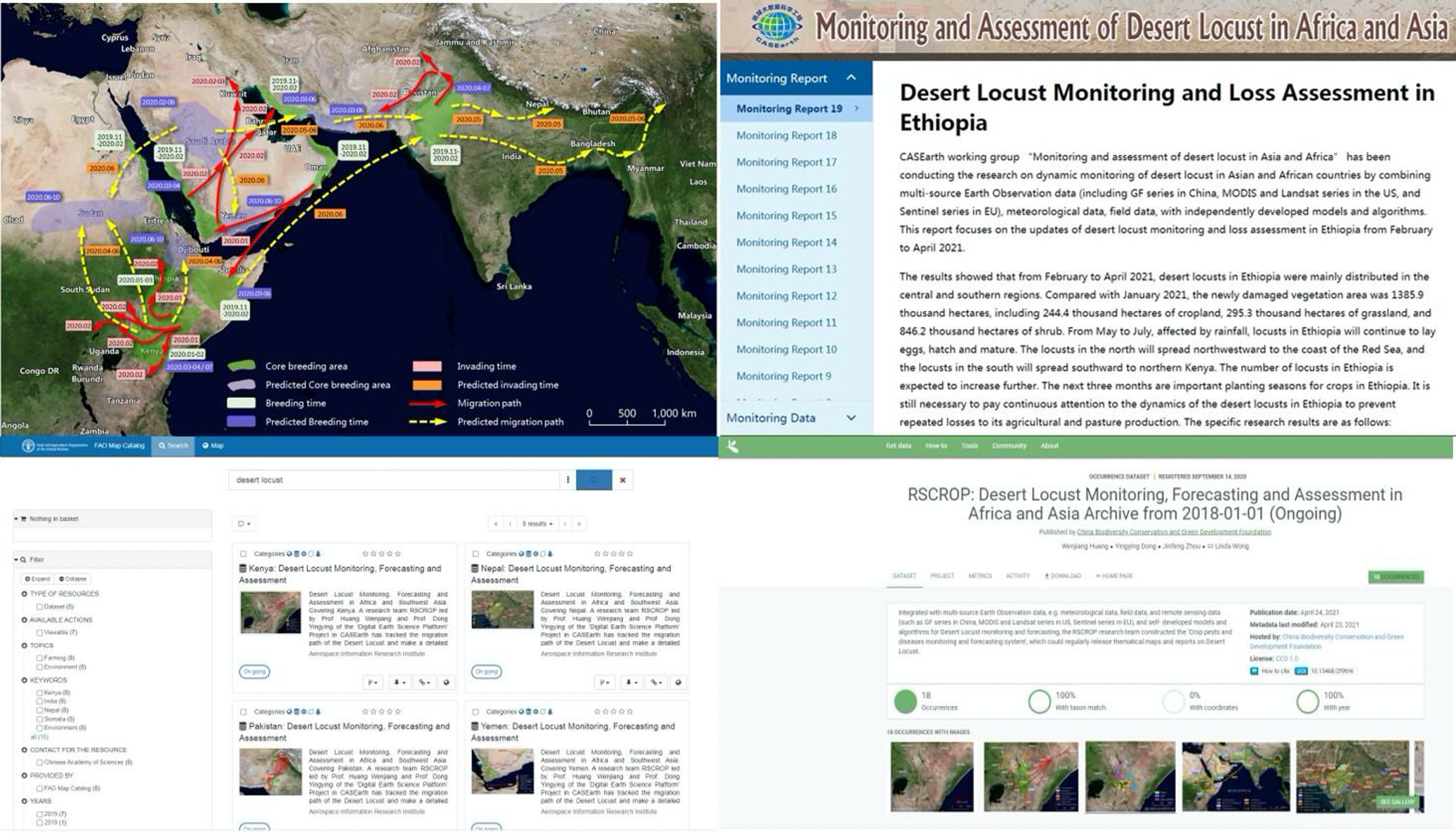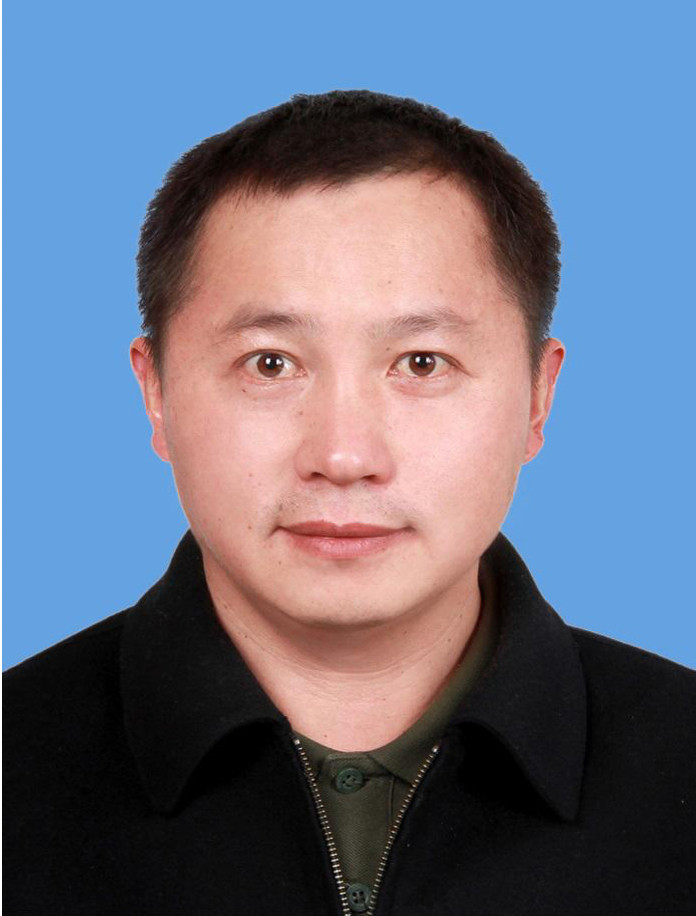Blog / Wenjiang Huang / June 14, 2021


The research team at the Aerospace Information Research Institute, Chinese Academy of Sciences (AIRCAS) conducted a series of research on habitat monitoring and early warning for large areas of locusts and estimation of agricultural and animal husbandry losses based on the GEO project Global Crop Pest and Disease Habitat Monitoring and Risk Forecasting. The research findings have been accepted by the Food and Agriculture Organization (FAO) of the United Nations and the Global Biodiversity Information Facility (GBIF) to support food security and regional stability.
Since February 2020, the research team has continuously published 19 scientific reports on "Monitoring and Assessment of Desert Locust in Africa and Asia" and conducted monitoring and early warning of core breeding areas and migration routes of desert locusts in Africa and Asia from 2018 to 2021. In addition, the dynamic temporal migration of locusts and dynamic assessment of agricultural and animal husbandry losses from the key desert locust endangering countries in Africa and Asia, i.e. Pakistan, Ethiopia, Kenya, Somalia, Yemen, India and Nepal, were analyzed. All research results and data sets are publicly shared globally through the Big Earth Data Science Engineering Project Data Sharing and Service Portal (data.casearth.cn).
The research results not only provide decision support for dynamic pest control by governments to ensure agricultural and animal husbandry production, but also provide support for international organizations such as FAO and the United Nations in collaborative pest management through spatial information technology. In the future, the research team will continue to pay close attention to pest migration and damage, and provide remote sensing monitoring and forecasting products and services to support scientific prevention and control, and ensure food security and regional stability.


Further information:
About the author

Wenjiang Huang Dr. Professor, Director for Key Laboratory of Digital Earth Science, Director of SINO-UK Crop Pest and Disease Forecasting & Management Joint Laboratory. He works in Aerospace Information Research Institute, Chinese Academy of Sciences (AIRCAS), and has been the principal investigator (PI) for more than 40 major scientific projects with the funding support by Global Earth Observation (GEO), Ministry of Science and Technology of China (MOST), National Science Foundation of China (NSFC) and Chinese Academy of Sciences (CAS), etc. His research interests include quantitative and remote sensing for precision agriculture and applications for monitoring crop, grass and forest pests and diseases using RS technologies. He has published more than 200 SCI journal papers focused on remote sensing for vegetation variables inversion and vegetation pests and diseases monitoring and forecasting. He has been awarded more than 10 science and technology awards, such as the National Science and Technology Progress Award in China. For more details, please visit the website (http://www.rscrop.com).
Thank you for your subscription to the GEO Week 2019 mailing list.